#so I learned a bit of super basic 2D rigging :3 It's so over for yall
Explore tagged Tumblr posts
Text
That's how it went right? 👀
Tiktok | Youtube
#fnaf#five nights at freddy's#fnaf movie#artists on tumblr#mike schmidt#springtrap#fanart#video#animation#this is my magnum opus#so I learned a bit of super basic 2D rigging :3 It's so over for yall#advanced shitposting with too much effort
239 notes
·
View notes
Text
Creative Output Project
For my Creative Output project, I decided to make concept art for a game that I’m working on. The game is a fast-paced 2D fighting game that I want to hand-animate with art inspired by classic 80s and 90s mecha anime and cartoons, like Gundam, Voltron, etc. ---
Month One: Research, Learning, Initial Ideation
In order to start making concept art for my game, I had to figure out what I wanted to create and how to actually draw it in that style.
To figure out what shows I wanted to have influence the concept art, I started rewatching a few episodes from each of the memorable mecha series I watched when I was a kid. Over the course of the month, I ended up watching several episodes from the various shows in the Gundam series, Evangelion, Robotech, and Voltron. Additionally, I watched the ‘2017 Giant Robot Duel’ between the US and Japan for further influence. While watching all of these, I took note of which mechs I liked certain design aspects of, and later printed out pictures of them and put them on the wall near my desk.
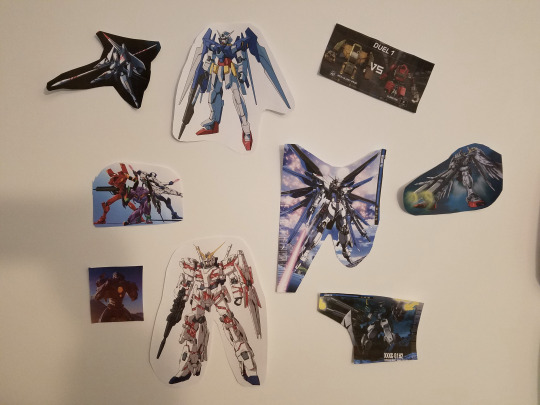
I figured that having them on the wall near my desk would allow me to visually recall the mech easily, as well as serve as inspiration while ideating for my own robots.
As for how to actually create the concept art, one way I taught myself was that I managed to get a hold of a few books on how to draw in the style of anime/manga.
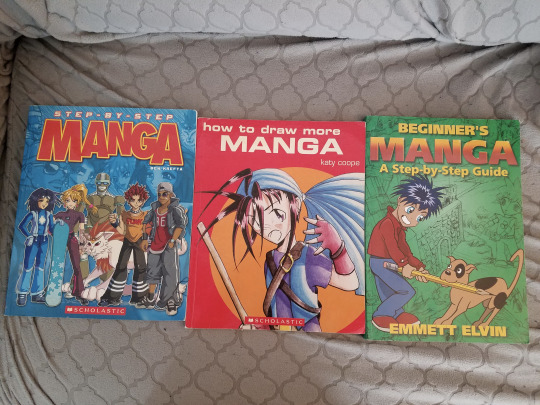
I used these books for references and tutorials towards the beginning of teaching myself the art style. Most of the tutorials were relatively easy and short, so I think a couple of the books may have been targeted more towards very-beginner artists. Once I felt I had a decent grip on the anime-style art that underlies the mecha genre, I went to Google and found some tutorials online on how to draw mecha. Unfortunately, not all of them were helpful, as many of them involved mostly just the artist drawing at an inhuman pace with little-to-no commentary or instruction. I did manage to find some helpful guides though, which are linked below!
https://www.youtube.com/watch?v=MXWdzbC_46Ahttps://www.sketchbook.com/blog/how-to-draw-mechs-basics/https://www.youtube.com/watch?v=aoP15ZfN1uwhttps://khallandra.deviantart.com/journal/Tips-and-Tricks-Mecha-Basics-564576627
---
Month Two: Mech #1’s Ideation and Creation
Now it was time to make the concept art for the first mech in my game! I started off the process by sketching ideas for the mech’s head.
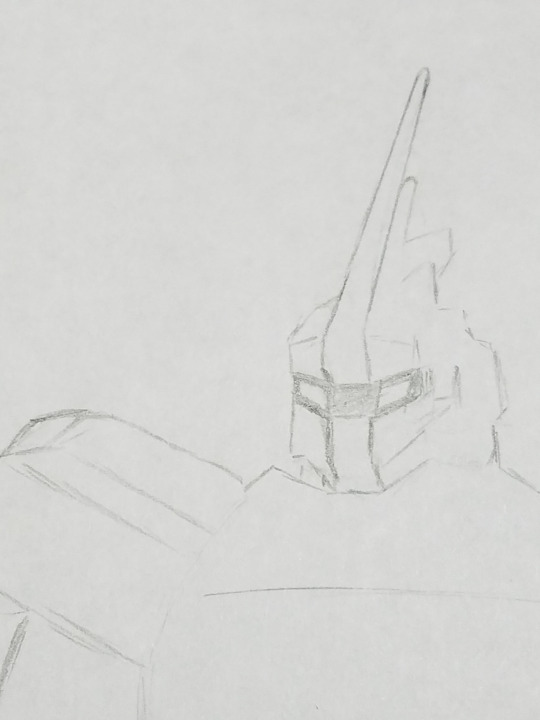
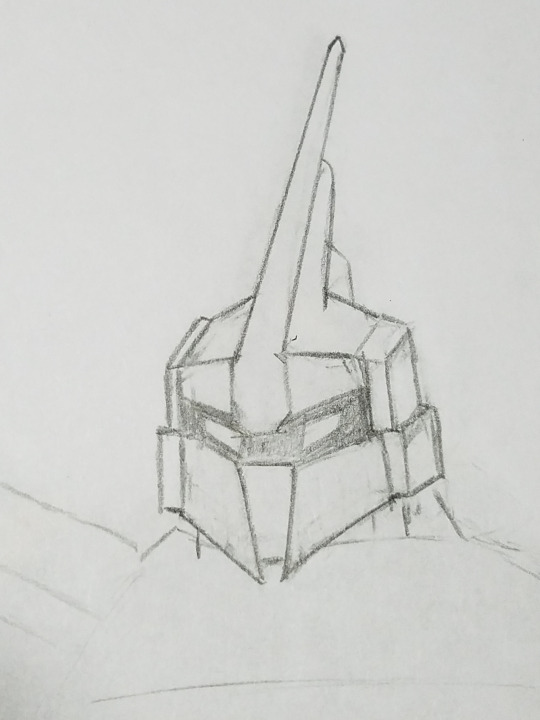
After sketching those, I spent the next couple weeks brainstorming, and the ideas on these pieces of paper inevitably made the Wall of Inspiration.
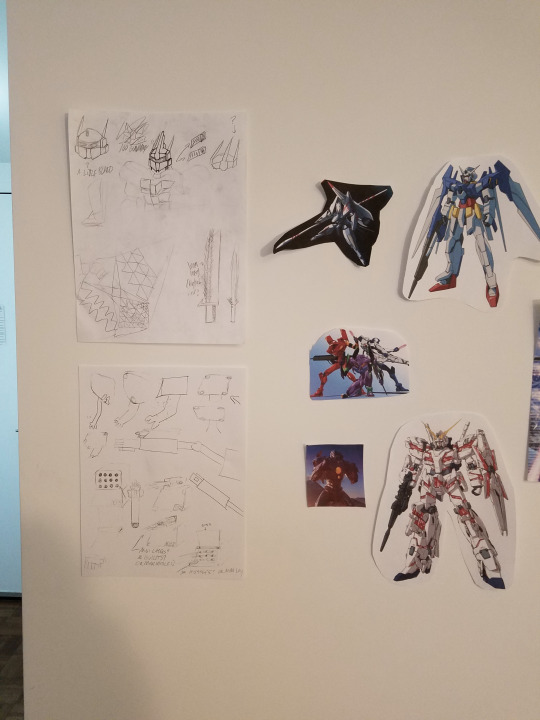
Finally, I sketched out the first character in full. Although it looked rather simple, since it was one of the first times I’d ever really made a character this complex before from my own imagination, I had a lot of trouble with it. In addition to the overall difficulty of drawing something as complex as mecha, I kept erasing after I drew things, attempting to either redraw what I just drew to make it perfect, or to add something else I had just thought of while drawing the initial lines. In total, drawing that out took me roughly five hours, and I was really happy with what came out of that session.
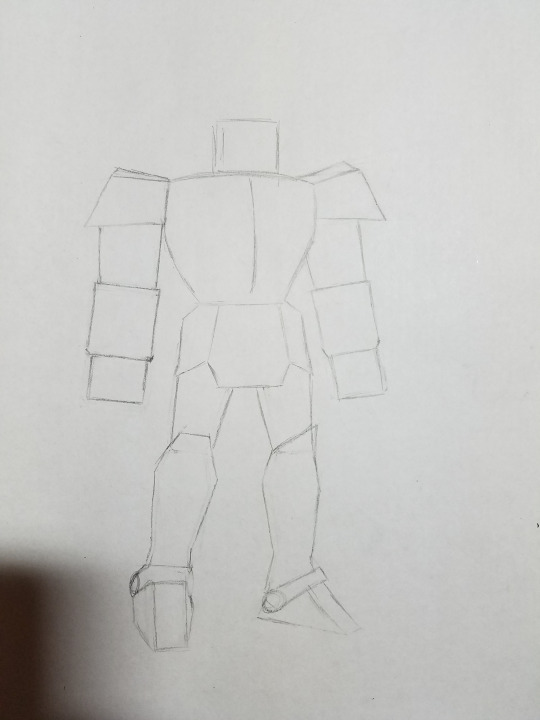
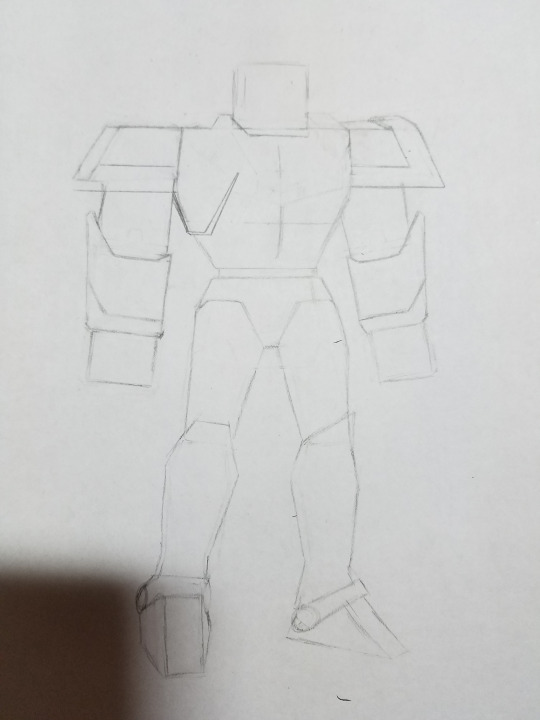
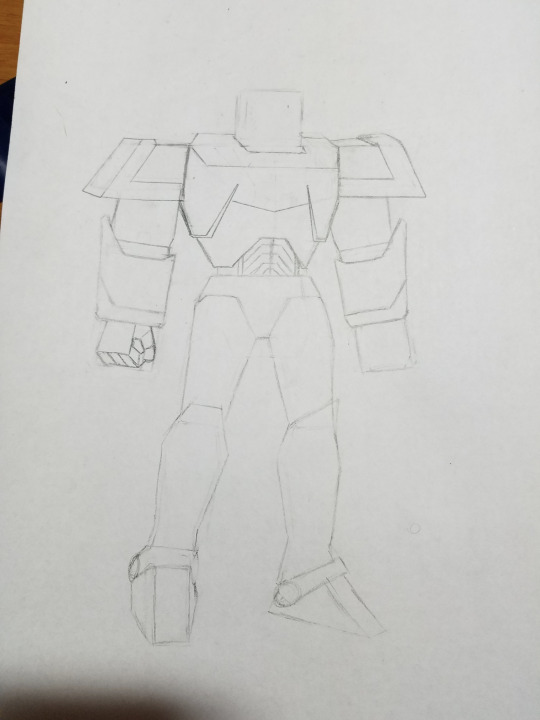
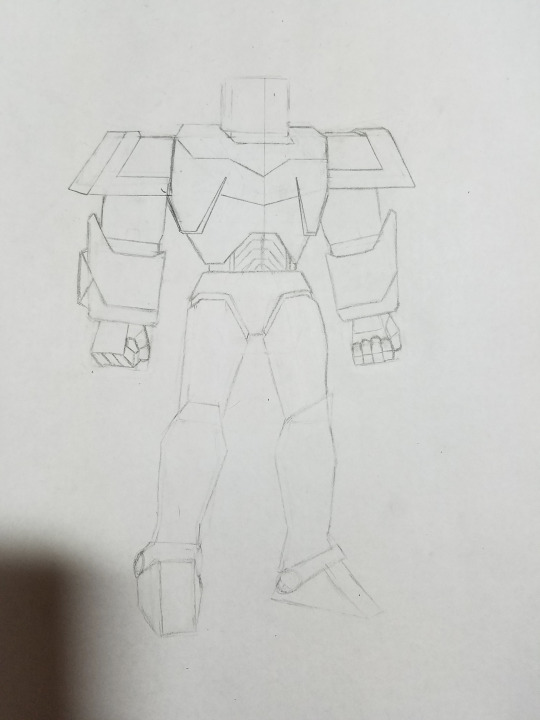
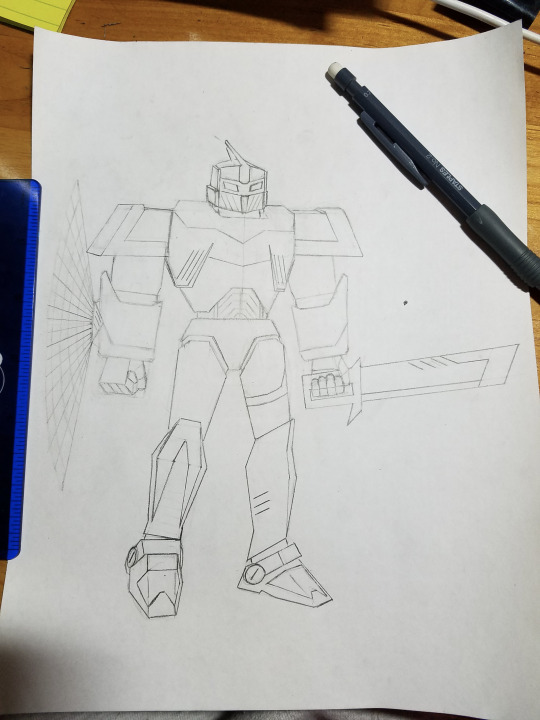
Pretty cool drawing right? I though so too.
However, when I put the drawing into Illustrator during my next session, I became significantly less happy with it. Image Trace didn’t do it justice and wasn’t even workable, so I had to hand-trace it with the Pen tool, which took hours. As I was tracing over it with the Pen tool, it started to look cheesier and cheesier, which was worrying me. I felt like I was some teenager passing time making MS Paint art during computer class.
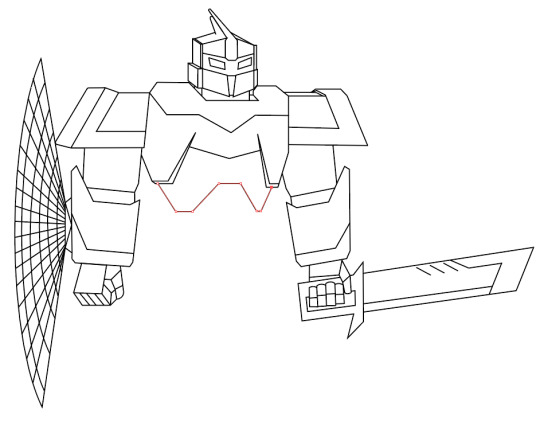
About halfway through, I kept minorly tweaking small lines and the placement of small shapes in attempts to make it better. Despite these attempts, I couldn’t manage to make the mech look any better. I even gave it a couple of days and went back to it, still couldn’t do much with it, so I hoped for the best and colored it in.
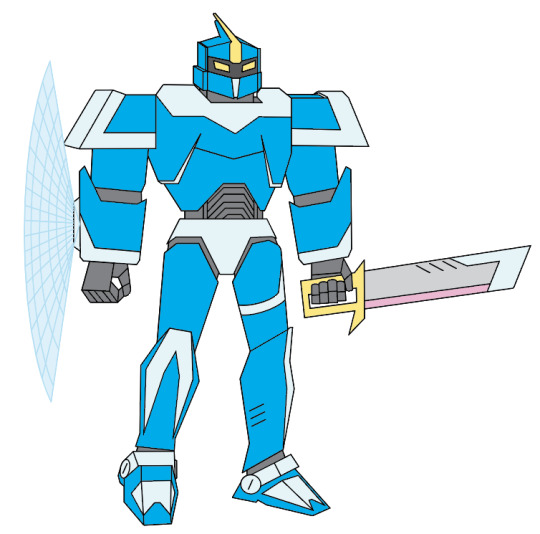
Overall, I think Mech #1 came out a lot better than I expected it to after giving it some color. I still am not super happy with it, and I like how the head looked in the second draft much better compared to how it turned out here. I think it came out okay, but something about it feels forced to me, like you could tell I was trying to use an art style that wasn’t really my own. I still can’t shake that ‘kid messing around in MS Paint due to boredom’ feeling every time I look at it, which actually really upsets me because of how much effort and time I put into it to make it specifically not come off like that. Finishing this mech taught me the most important lesson in art I’ve learned to date: imitating the style of others will only lead to output that doesn’t meet your expectations. I thought I learned this a long time ago with music, but I guess I needed a reminder session.
---
Month Three: Mech #2′s Ideation and Creation
My original plan for the last month of my constant output project was to animate the first mech I made, and put that robot into the game I was working on. I had been learning how to use Spine, a rigging animation software, for a couple weeks beforehand, and had even begun to work on animating Mech #1. However, shortly after, my team and I decided to sideline the fighting game in order to build on a separate prototype for a game we didn’t initially think of or expect to make. So, I decided that in order to continue working on the game in a productive manner, I should make more concept art, and animate both according to their finalized character move-sets when the project gets to that point. Also, I really wanted to give creating a mech another try, and I had an idea for a robot that I thought would be kind of cool. I felt like I tried too hard to imitate my influencers while making it, and that the resultant output was lacking because of it.
For the second mech, I decided to design it mainly using my art style, while still taking minor design notes from the creators who influenced me to pursue this project in the first place. This time around, I had actually came up with the majority of the mech I wanted to make on the subway, so instead of repeatedly iterating on the various ways I could go with it like I did with the first design, I just went in and started drawing a draft of it.

I wanted the next character I designed to be a tank-y powerful-yet-slow character, so I decided to go for a more sturdy-looking mech design. I also wanted to give the character powerful projectiles to make up for its slow movement speed, so I took note of Heavyarms from Gundam Wing and made one of the mech’s arms a gun, except instead of a gatling machine gun like Heavyarms, this character has a three-barrel laser cannon. I consciously decided to stop trying to overcomplicate the mech. The circle in the chest was meant as a way to shoot a ‘super-attack’ in the form of a massive laser beam.

This was the final sketch before I scanned it into Illustrator to edit next session. I decided against throwing in the chest-hole ultimately to both keep the semi-minimalistic aesthetic I was going for, and keep the design from being a bit too Pacific-Rim-y for my taste. (Side note: while the drawing was still in sketch form like this, one of my friends said that the laser cannon arm reminded him of three pieces of bundled chalk, and I still can’t unsee it.)
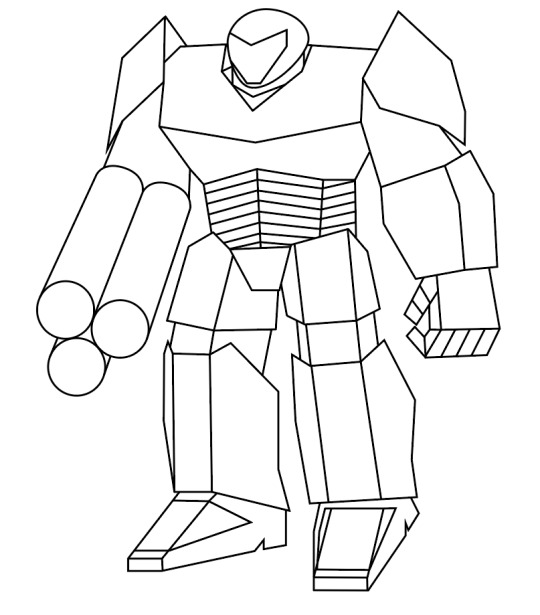
This was how Mech #2 looked after I finished tracing it with the Pen tool (Image Trace couldn’t get it close enough to right so I just went at it manually again). I didn’t change much on this design from the last step other than that I shortened the laser cannons (and reshaped them to look slightly less like chalk) and slightly changed the shape of the mech’s head.
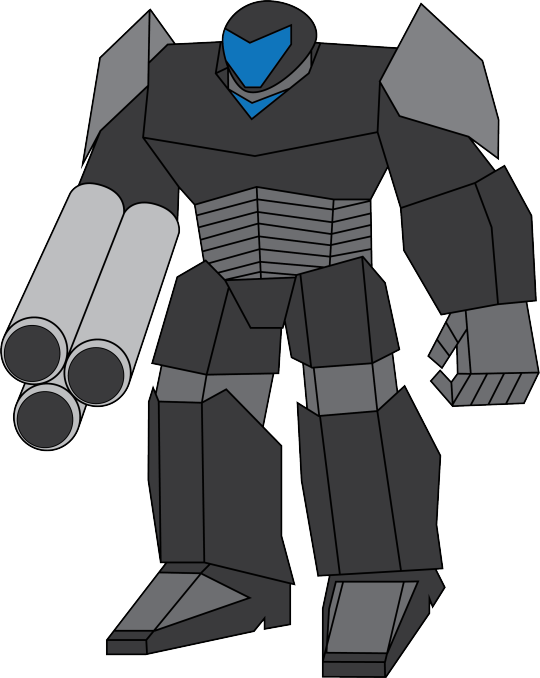
This is the final version of Mech #2. I really liked how this came out after being colored. It felt much more ‘me’ than Mech #1, and I felt like that shows through the design quality upon comparison. Only change to it other than the coloring (which was changed at least ten times before this image was exported) was that I added circles in the laser cannon so the cannons didn’t look like grey chalk (I couldn’t shake it). I can’t say enough about how much happier I am with this mech design than the first one. I hope that when I get around to doing the concept art for Mech #3 I like it as much as I like this one.
---
Conclusion:
So that’s what I did for my Monthly Output this semester! I really enjoyed learning to draw mechs, even if I wasn’t the biggest fan of my first design. I’ve always wanted to learn how to draw them, so this was a lot of fun for me to do. Learning a new art style is very difficult, and honestly I definitely have yet to master it. I guess that’s why the same studio has been making Gundam for 40+ years. I still feel like I have a long way to go until I get to the point of feeling comfortable putting my own designs in games I make, so these will probably stay as concept art to hand off to an illustrator for now. I’m really excited to keep at this. I may not be the Gundam animators yet, but I feel like I can hold my own a little bit now, which is way more than I could say at the beginning of the semester!
0 notes